April is finally here, and with it, the first full month of spring. If you’re ready to hit the reset button, this issue of Start Healthy is here to help, with easy ideas to boost both your health and the planet’s health, great workouts you can do with your pet, budget-friendly gluten-free recipes, and a list of wellness items you can buy with your tax refund.
The end of the month marks the fifty-second anniversary of the first Earth Day celebration. Many of the top actions you can take to help the planet can actually help your health too. Check out the list of habits to adopt if you want to make an impact.
Spring is also a great time to focus on your health by improving your fitness routine. If you have a pet, you’ll want to read the article on the best workouts you can do to boost your cardiovascular fitness while giving your pet some exercise.
Gluten-free cooking has a reputation for being bland and expensive, but the recipes in this issue, a hearty and nutritious sweet potato salad and lemon-flavored zucchini bread, prove otherwise. Give them a shot, and see for yourself how delicious going gluten-free can be.
Whether you’ve already filed or not, you’ll need some much-deserved self-care time after doing your taxes. Enclosed are some of the best ways you can spend your refund on improvements to your health and wellness.
Here’s to making your health a priority this month! As always, it’s a pleasure to send you this magazine.
Most people know that regular exercise is important for good health, but what you may not realize is that exercise is just as important for your pet. The Association of Pet Obesity Prevention estimates that roughly 59 percent of cats and 55 percent of dogs in the United States are overweight. To help prevent your pet from being part of those statistics, make sure they receive daily exercise.

Regular exercise helps dogs expend energy, lowers their risk of obesity, reduces unwanted behaviors due to boredom or anxiety, and builds confidence. How much activity your dog needs will depend on its age, health condition, and breed. On average, dogs require thirty to sixty minutes of daily exercise. However, some dogs, particularly those classified as herding or sporting breeds, may need up to ninety minutes. Also, puppies require more exercise in short bursts, while senior dogs may need shorter, low-impact workouts.
Sure, you may take your pup for a regular walk or visit the local dog park. However, that only scratches the surface of ways to exercise your dog. Try some of the following activities that will leave them dog-tired.

If you’re interested in workout equipment for your dog, consider some of these options.

You don’t need to feel left out if you’re a cat owner. There are plenty of purr-fect ways you can bond with your feline friend while helping them exercise. It’s recommended that cats receive around thirty minutes of physical activity a day; this will depend on age and if your cat is strictly an indoor feline or spends time outside. Regular physical activity also helps cats relieve stress and eliminate boredom.
Cats don’t have the same reputation as dogs do for running around and roughhousing. However, that doesn’t mean they don’t enjoy being active. Try some of the following activities to help your cat exercise.

If you need some assistance in getting your cat to exercise, try adding these feline fitness items to your home.
Are you looking to build some new healthy habits? With Earth Day this month, now is the time to make a few lifestyle changes that will improve your health and benefit the planet too. Use these suggestions for simple modifications to your routine that could have big pay offs for you and Mother Nature.
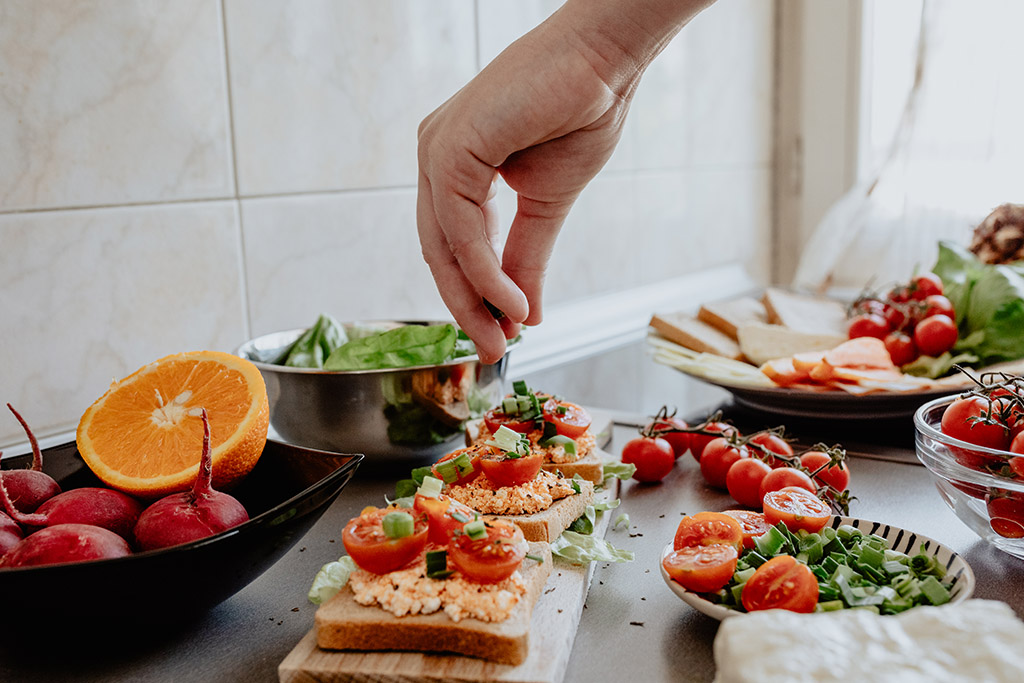
When you eat less meat and dairy, you can benefit the planet and reduce your risk of certain diseases, such as cancer, heart disease, and diabetes. Ten percent of all greenhouse gas emissions in the US comes from agriculture. You don’t have to completely give up animal products to make a difference. You could start by eliminating it from just one weekly meal. Vegan or plant-based diets contain more fiber, vitamins, and lower levels of unhealthy saturated fats, but you’ll need adequate amounts of protein from sources like nuts, seeds, and beans to fuel your body.
Americans eat and throw away a lot of food, which negatively impacts the environment. Much of what we buy is transported over long distances, and the process of getting food to our table can pollute the air, release harmful greenhouse gases, and contribute to climate change. Agriculture is responsible for a fourth of the world’s greenhouse-gas emissions, and disposing of food in landfills release methane—a particularly harmful greenhouse gas. Carefully plan your meals so you can avoid throwing out food unnecessarily.

Whether you grow your own produce or shop at a grocery store or nearby farm, it’s wise to eat locally. Shipping meats, fruits, and vegetables over long distances creates pollution and burns energy, and transported food can lose its freshness and end up in landfills. Food grown closer to home is typically fresher and requires less packaging. You can even carry your groceries home in a reusable shopping bag to reduce waste even more.
Try to use whole or minimally processed foods when cooking, and skip frozen meals sold in plastic. Snack on apples and fresh vegetables instead of potato chips. Avoid dining at fast-food restaurants where food can be laden with calories, saturated fats, and salt, and might be served with plastic utensils or in wasteful packaging.
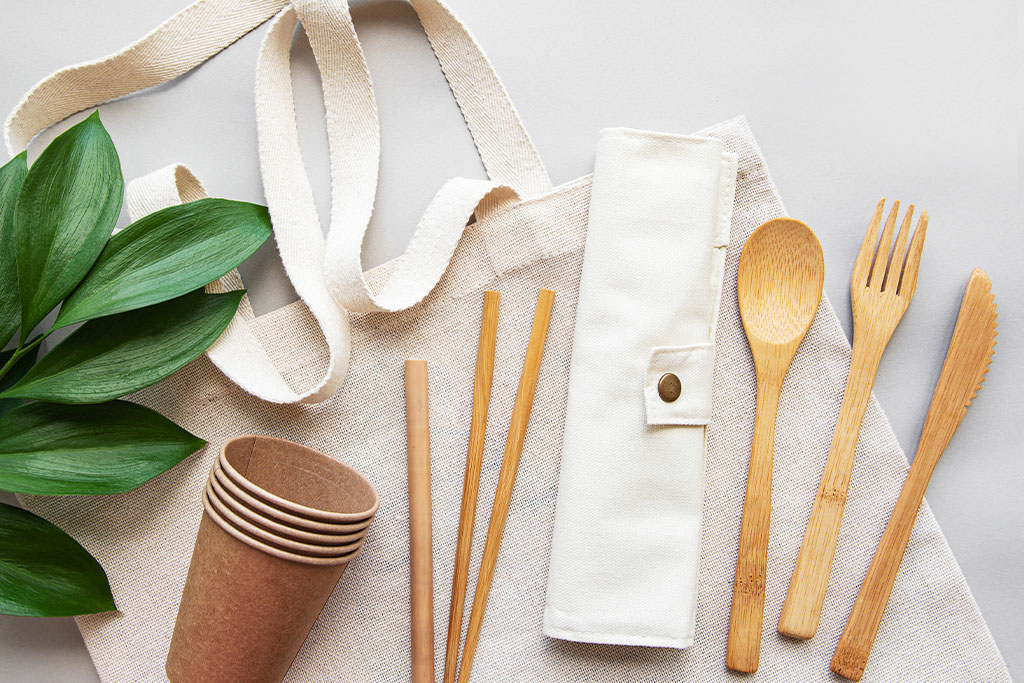
Did you know that only a small number of plastic bags are recycled? The rest ends up in landfills or in the ocean. Plastic has been found in our air, food, and even in our bodies. An easy way to cut down on plastics is to shop with your own reusable shopping bags made of natural fabrics. Try drinking tap water out of a refillable water bottle with its own filter instead of bottled water. Use a bamboo or paper straw when eating out.
Home-cleaning products are often loaded with unhealthy chemicals like bleach, formaldehyde, and ammonia, so buy ones free of these ingredients. Use eco-friendly cleansers, such as Blueland’s Multi-Surface Cleaner, Clorox Compostable Cleaning Wipes, and Tide Free and Gentle Liquid Laundry Detergent, that are deemed safe for you and the planet by the EPA. Or you could make your own cleaning solutions. Vinegar and baking soda are products found in most households and can be used to clean most surfaces in your home.

Your steamy morning shower can lead to skin inflammation and dryness. The average eight-minute shower uses sixteen gallons of water. Quick showers will allow your water heater to use less energy, and you will waste less water. Install a showerhead with a WaterSense label so you’ll use at least a half-gallon less of water per minute during your shower.
Gas-powered vehicles are the biggest source of greenhouse gas emissions in the US, and if you walk or bicycle more, you’ll get more exercise and benefit the planet. Take fewer car trips, and walk or ride your bike to the grocery store or carpool with a neighbor or friend. Walk into town for dining out instead of driving. Take public transportation to work, or, if possible, work from home one or two days a week.
Gluten-free cuisine has a reputation for using complicated—and sometimes expensive—replacement ingredients. However, it doesn’t have to be that way. Whether you have to go gluten-free for medical reasons or simply want to eat a bit healthier, these recipes from Frugal Gluten-Free Cooking can help.
The flavors and ingredients in this salad are often associated with fall, but you don’t have to wait for autumn to enjoy it! Crunchy pecans are an excellent swap for croutons and nutrient-dense sweet potatoes make the salad a bit heartier.
Baking can be tricky to master, especially when it comes to keeping things gluten-free. However, this lemony zucchini bread makes it super simple—and tasty!
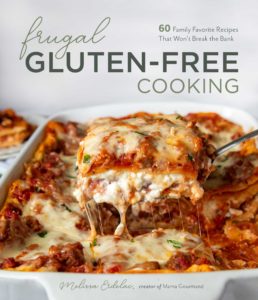
Reprinted with permission from Frugal Gluten-Free Cooking by Melissa Erdelac, Page Street Publishing Co. 2021. Photo credit: Melissa Erdelac
recipe by melissa erdelac
photos by melissa erdelac
Crispy roasted kale is only one of many standouts in this exceptional harvest salad recipe. Golden sweet potatoes and candied pecans battle in taste and blend in perfect unison with complementary fresh apples. This nourishing salad would make an impressive addition to a holiday meal, a filling lunch or an ideal accompaniment to smoked sausage, pork chops or baked chicken for a weeknight dinner.
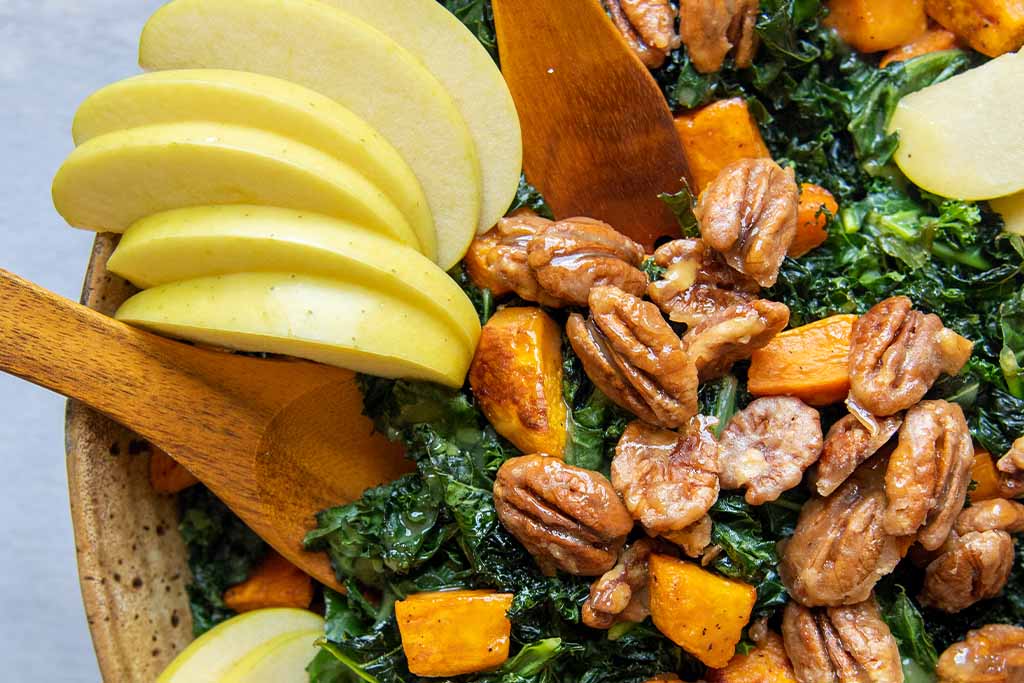
Serves 4 to 6
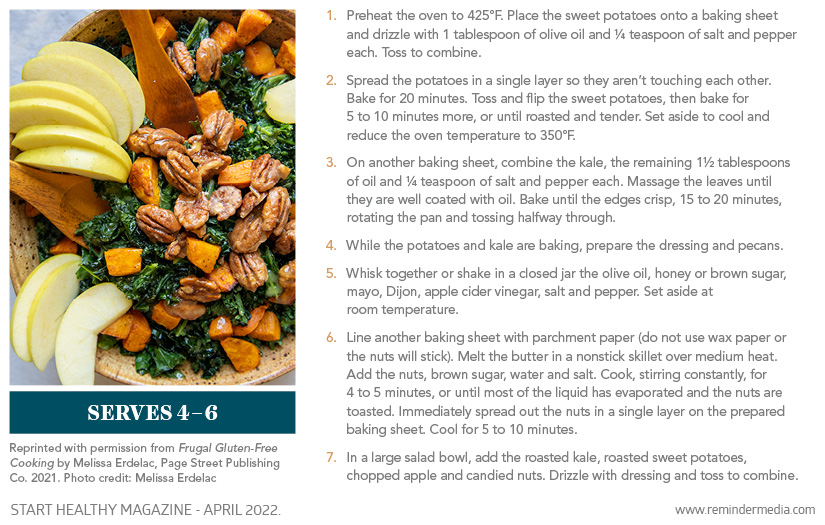




recipe by melissa erdelac
photos by melissa erdelac
You’ll be hard pressed to find a more affordable produce than zucchini, especially in the summer months when it’s practically free! Since zucchini doesn’t freeze well, I utilize garden and farmers’ market zucchini by making several batches of easy, one-bowl zucchini bread to freeze for busy mornings. This recipe is easily doubled to enjoy one now and freeze one for later!

Serves 12
Tips:
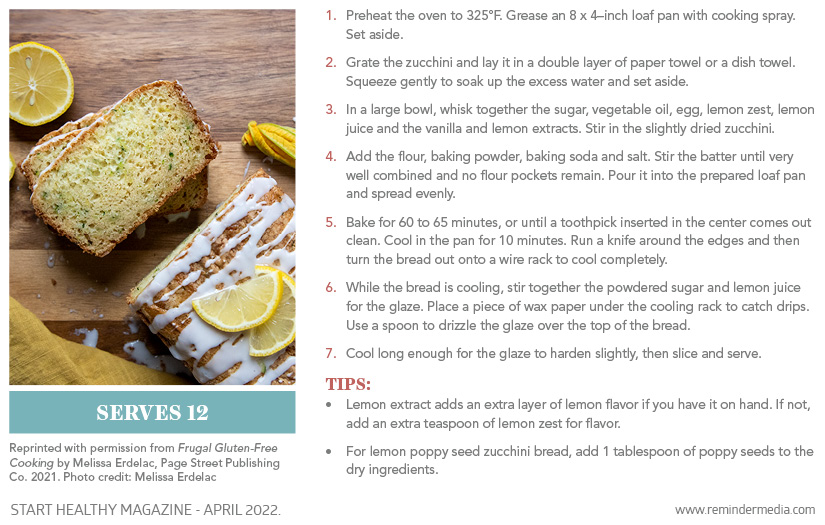



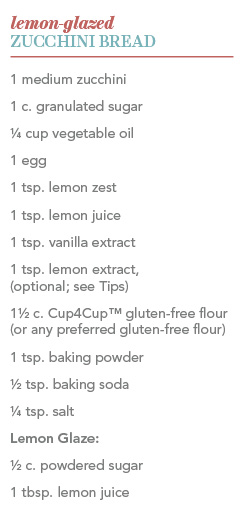
Paying taxes isn’t usually an easy or fun task. However, getting a tax return is a much more positive experience. This year, put the money you get back toward improving your mental and physical well-being.

After the stress of paying taxes, it’s time to give your mind the love it deserves. When you put your return toward your mental health, you can boost your mood, creativity, and productivity.
Chronic stress can reduce your immune system’s effectiveness. If you have difficulty managing stress, consider scheduling massages as part of your wellness routine. A sixty-minute massage can lower cortisol, the stress hormone, by up to 30 percent after one session. There are different types of massages, so find a licensed massage therapist who can work with your goals in mind. Some spas offer package deals, so be sure to ask if you can purchase a bundle of massages at a discounted rate. By prepaying for a few weeks of services, you’re more likely to put the time aside for self-care.
Not every insurance plan covers mental health services. If this is true for you, you can put your refund aside to pay for therapy sessions. If you have mental health coverage in your insurance plan, then use the money to pay for your out-of-pocket copay at each visit.
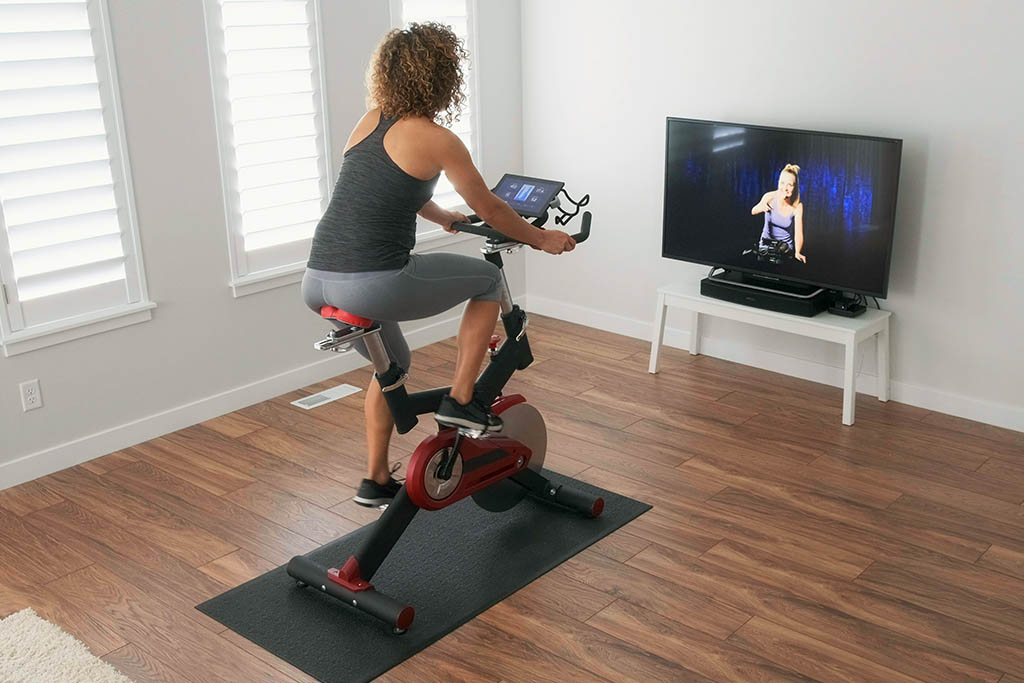
Exercise is essential to keeping your body in good health, but the costs associated with workout programs and gear can deter people from having a consistent fitness routine. You can use your refund to help you keep up with your exercise routine.
You don’t need a lot of gym equipment to work out effectively, but it can help to have a few pieces of high-quality equipment on hand if you work out at home. Consider purchasing small items such as a set of weights, or go big and invest in a workout machine like a treadmill. Be sure to have enough space reserved in your home for your new purchase to avoid overcrowding your workout area. If you prefer to exercise at a gym, use your refund to pay for a membership. If you know you’ll use it regularly, ask if the gym has a discount for paying a few months to a year of fees in advance.
Tracking your progress is an essential step toward accomplishing your goals. If you’re a visually-inclined person and like to stay organized, you could benefit from a fitness tracker, such as an Apple Watch or a Fitbit. These trackers can record the details of your workout, from your heart rate to calories burned, and all you need to do is press a button to review how you’re progressing over time.
Whether you attend a class online or in-person, a guided workout from a professional can help you exercise more effectively. If you’ve ever wanted to take a workout class at a local gym or subscribe to a fitness app with a library of workout videos, such as Peloton and Apple Fitness+, now is the time! Check sites and apps like Groupon for local fitness class deals.
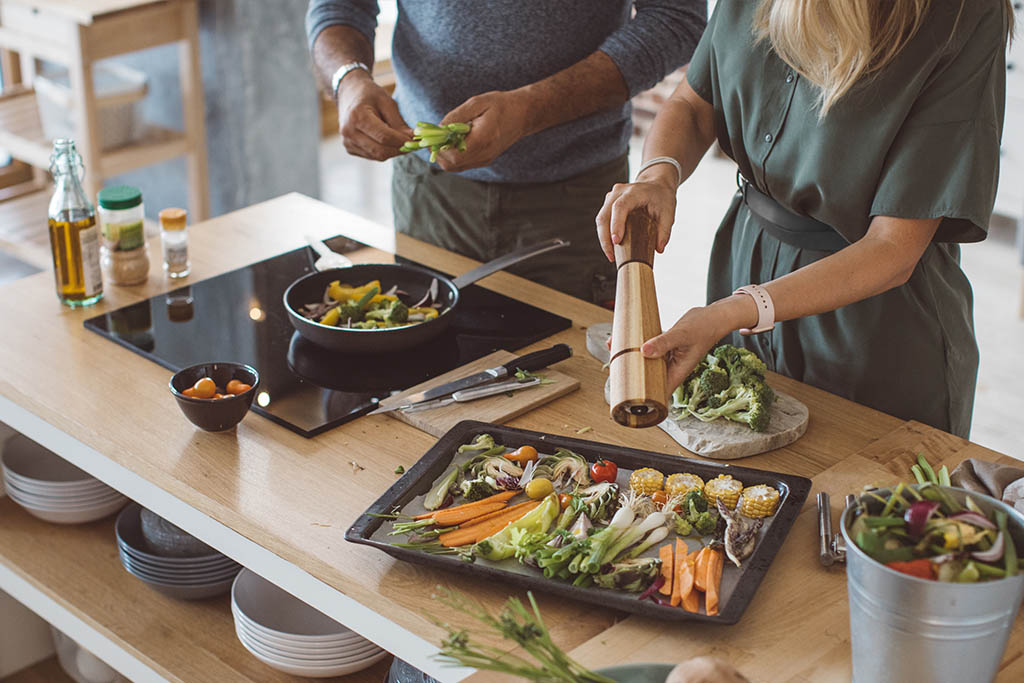
Your diet affects every part of your health, so it’s important to fuel yourself properly to ward off sickness and disease. Healthy foods and meals can be expensive and time-consuming to plan. However, you can use your extra spending money to change your relationship with food.
Invest in a few nutrition classes or one-on-one sessions with a registered dietician to set yourself up for a lifetime of successful healthy eating. Nutritional experts can give you eating plans tailored to your health concerns and budget. Even after the classes or sessions are over, you can keep the information you learned to help guide your meal planning.
If your journey to healthy eating is just beginning, a meal-plan service can help teach you what to eat and how to cook it. Use your refund to pay for a healthy meal-delivery service like HelloFresh or Blue Apron. Most services can accommodate special diets, such as vegetarian or gluten-free, so be sure to pick a meal plan that fits your ingredient preferences.
A little bit of money can go a long way. Use your tax refund this year to try something new that could improve your health.








